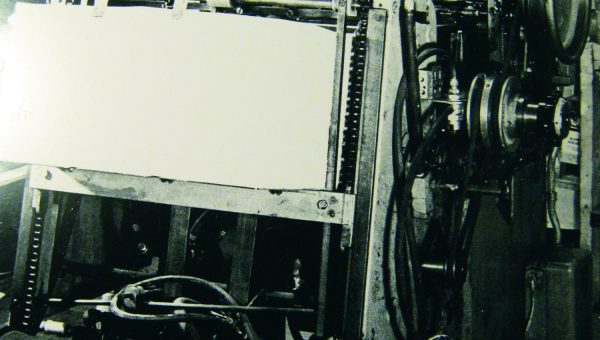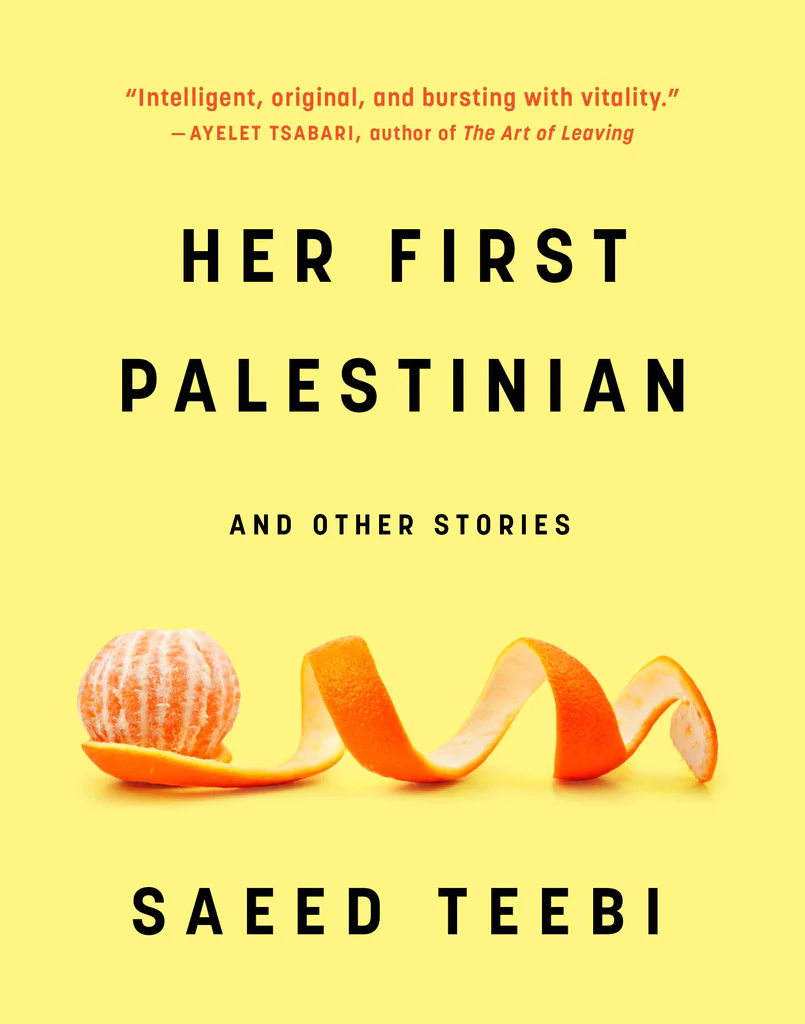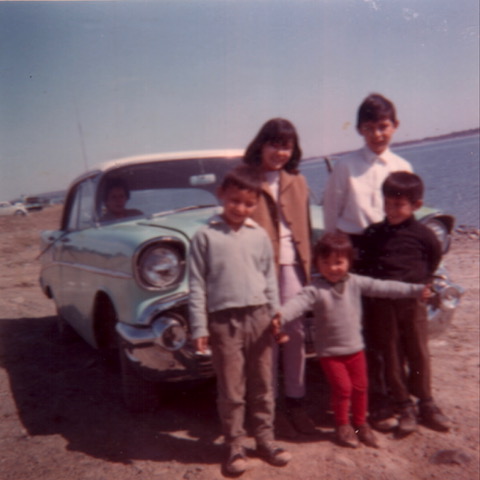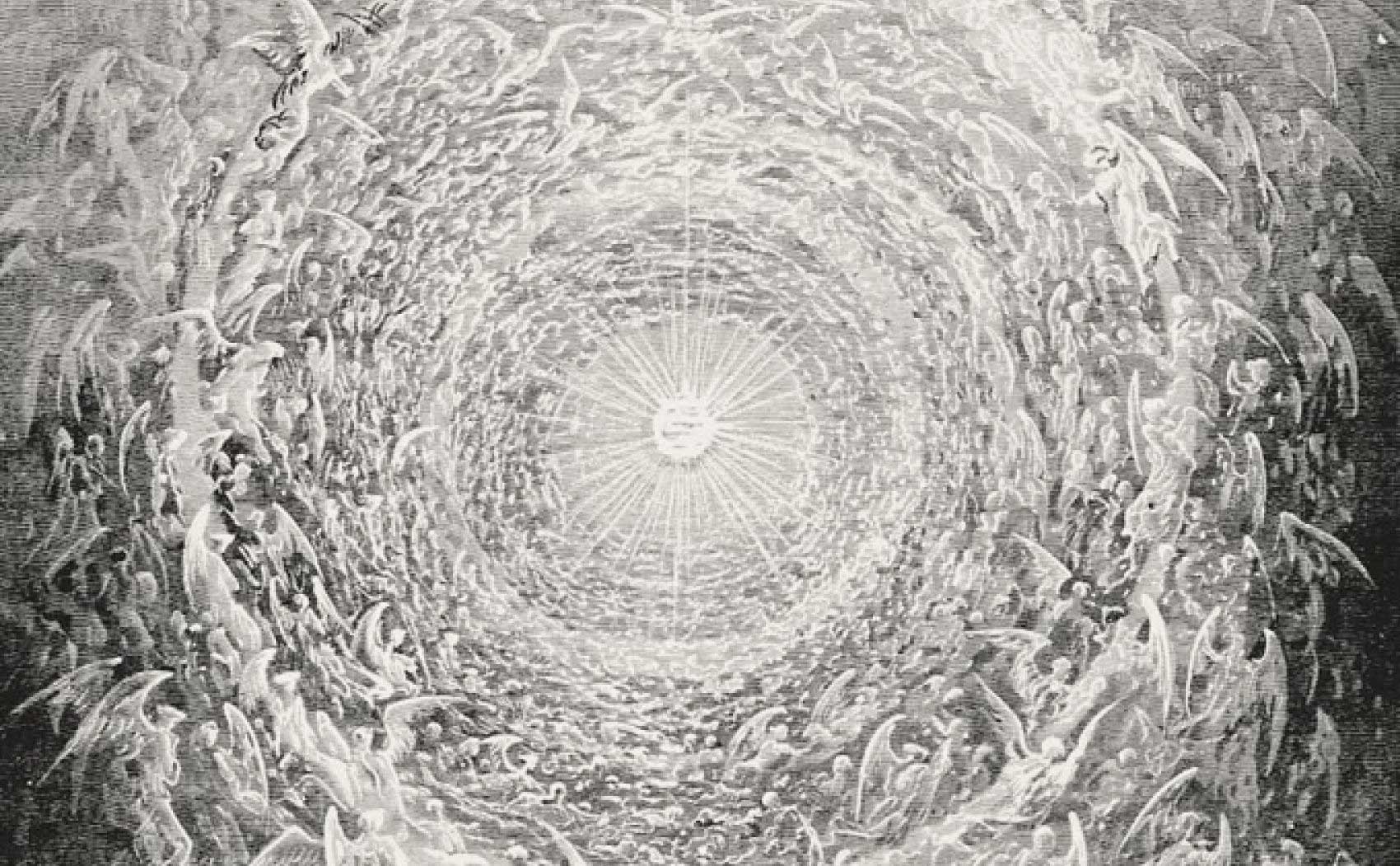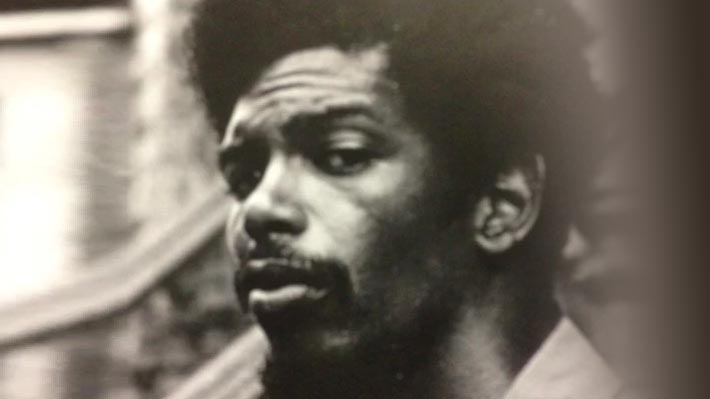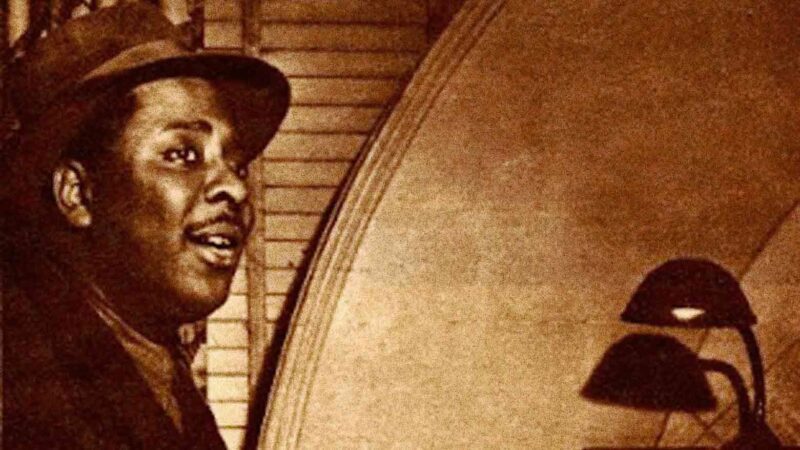[From the website of Véhicule Press]
Véhicule Press began in 1973 on the premises of Véhicule Art Inc., one of Canada’s first artist-run galleries. The large space occupied by both the gallery and the press at 61 Ste-Catherine St. West was once the Café Montmarte–the renowned jazz club of the 1930s.
Guy Lavoie (designer of the Véhicule Press logo), Annie Nayer, Marshalore, and Vivian Jemelka-White began using equipment inherited from Kenny Hertz’s defunct Ingluvin Publications and an idle, ancient ATF Chief 20 printing press originally purchased by artist Tom Dean to print Beaux-Arts magazine.
In 1975 the press became Coopérative d’Imprimerie Véhicule–Quebec’s only cooperatively-owned printing and publishing company. Véhicule Press was the publishing imprint of the coop. In late spring 1977, Véhicule Press moved to 1000 Clark Street in the heart of Chinatown, and in 1980 moved to an industrial space located on Ontario Street East.
In spring 1981, the coop was dissolved and Simon Dardick (who had joined the press during the summer, 1973) and Nancy Marrelli continued Véhicule Press from Roy Street East, not far from The Main (just around the corner from where the poet Emile Nelligan lived) in the Plateau area of Montreal.
Since 1973 Véhicule Press has published award-winning poetry, fiction, essays, translations, and social history. Simon Dardick and Nancy Marrelli are the publishers and general editors, Vicki Marcok is Office Manager and Maya Assouad is Marketing & Promotions Manager.
Simon Dardick Interviewed by Montreal Serai
(Rana Bose for Montreal Serai) MS: Hi Simon! Thank you for this interview. Last weekend, we went for dimsum at 1008 rue Clark in Montreal’s Chinatown. It’s one of the spots we go to, often. The restaurant has changed hands several times in the past decades. I told my family that this area around Clark is roughly the place where the Vehicule Press was located in the late 70s. 1000 Clark has been co-opted into 1006 and 1008 into a very large restaurant and mall space. And I told them that we would come here and collate and saddle stitch magazines and journals that some of us would be putting out around those times. Dr. Daya Varma of McGill Med School had introduced me to you. The floor was creaky and unvarnished. There were piles of cardboard boxes, print over-runs, a few offset print machines, large glass plates on drafting tables for layout. You suffered through all the at-cost work you did for the activist types then! Vehicule was a co-op, was it not? How did it operate? Who were your main clients? How did you stay afloat? Can you give us a feel for those times?
SD: The gallery artists chose the name Véhicule because they saw the gallery as a vehicle for ideas. Véhicule Press, the name for the publishing side of our printing co-op which was established in the back of the gallery, is half French and half English, an appropriate hybrid name we thought. We published our own books under various imprints—mostly poetry and artists’ books—and printed books for other small literary presses such as New Delta and Guernica. However, we paid the rent and modest salaries when we could, by printing for the arts community (posters, invitations and catalogues) and flyers and posters for various social and political groups. We were considered to be the non-sectarian alternate printer in town, although we all knew each other. This is a funny story. During the lead-up to the Montreal Olympic Games in 1976 we were approached by the Marxist-Leninist Presses Solidaires. They were concerned that with the increased security around the Olympics that the RCMP would raid them and destroy their presses. They were going to close down temporarily. They asked if they could send us their customers before and during the Olympic period. So for several weeks we worked long hours turning out political pamphlets and journals (using a lot of red ink!) We printed for activist groups throughout the city including the Milton-Park Committee and groups in Pointe St. Charles, various university political science and social work faculties. When printing jobs were few, we went on and off unemployment insurance.
MS: It seemed you were printing or distributing a lot of poetry books then—(I picked up the likes of Ferlinghetti, Snyder, Norris from a waste-basket and I still have them, you had asked me to take them!)—the post-beat gen from the west coast of the US and later on Canadians like Dudek, Furey, Glickman, Erin Moure. I remember picking up these print over-runs and started developing an interest in poetry. What was your main printing activity then? Poetry, Posters, books, Magazines and journals? Did you do any academic publishing then?
SD: Our first catalogue in 1976 listed poetry titles such as Three Dozen Sonnets & Fast Drawings by Bob McGee, Honey by Claudia Lapp and Vegetables with poems by Ken Norris and drawings by Jill Smith. But also artists’ books such as Contacts by Bill Vazan and Hitchhike by Frank Vitale and Stephen Lack. For a few years we distributed literary titles for CrossCountry Press, New Delta and Guernica. In the 1970s there was an efflorescence of literary presses being founded across Canada. We all believed that Canadian-owned publishing houses should be publishing Canadian writers and took pride in creating a distinctive Canadian literary culture. An important component in creating a national literature was to have Canadian writers taught at the high school and university level. To this end in 1980 we published Violent Duality by Sherrill Grace, the first mid-career evaluation of Margaret Atwood’s work. This was followed by Earle Birney’s Spreading Time: Remarks on Canadian Writing and Writers (1904-1949). Five years later we published the first major critical work on Michael Ondaatje—an anthology called Spider Blues edited by Sam Solecki .
MS: Talking about poetry, it has evolved over the years, somewhat—more performance oriented, even with music back-up—in my books, with the wordsmithing of folks like the late Gil Scott-Heron and the advent of east coast rap, I think stand up performance poetry has become quite fundamental. What are your thoughts on poetry publishing today? Does the hard copy anthology work? Would you consider a new format for poetry publishing? Like a Kindle/Kobo type video performance as a publishing format? Downloadable from the net?
SD: We are publishing more and more of our titles in the ePub format. We’ve tried a few poetry titles but the eBook treatment of poetry leaves a lot to be desired, particularly if there are long lines. It’s important to have poetry available, but before we do more poetry titles we are going to wait for the technology to improve. I love the diversity of the current poetry scene. I can embrace both performance poetry and the more traditional. Carmine Starnino, the editor of our Signal poetry series, has a policy of publishing first-time authors, probably about a third of our list. Andrew Steinmetz, editor of our Esplanade Books fiction series, has the same approach. Poetry anthologies are important because they can be a kind of a stock-taking, or indicate current trends, or point readers in the direction of fresh and innovative writing. They are also very good for the bottom line!
MS: I am trying hard not to resurrect nostalgia, but there was a left-wing sensibility towards opposing the Vietnam War, supporting conscientious objectors who came to Canada from the US, uphold peace in general and pro-socialist or pro-social democratic notions around which publishers, like you, seemed to be inspired ? Am I correct in that sense? What inspires you now –today, in the Harper era, to continue publishing and thriving?
SD: Nancy Marrelli and I consider ourselves fortunate to be publishers—even in this time of rapid transition in the book business. We don’t make much money but are able to publish books that reflect our values; books that promote culture and which, hopefully, contribute to improving people’s lives in some way. We believe that diversity is essential and are concerned when one in every four English-language books will be published by one publisher, with the mega merger of Penguin and Random House.
MS: It’s going to be Vehicule’s 40th anniversary this year. Congratulations! You are a Canadian and Montreal landmark. You have popularized the scene around the Main, the Mile end, the Jewish history of the neighbourhood—all this has been well captured in your various series and publications. What about the other communities who have now been passing through? Any thoughts on publishing the works of Latin Americans, Italians, South Asians , Arabs, Persians in English-as a community-who are now a sizable segment of the Plateau Mont-Royal ?
SD: One of our goals, particularly in our Dossier Québec series, is to publish books that document Quebec society for those of us who live here and to those in the rest of Canada and beyond. This is a continuing series and we are always open to new projects. We also have a commitment to translation and have published poetry, fiction, and non-fiction from the French, Spanish, Arabic, Yiddish and Japanese.
MS: Canadian women read more than men and are discernibly more literate. This is quite clear when you attend Blue Met and book launches in the city. Writers groups and book clubs invariably have far more women than men. What is the problem with men and books? Why don’t they read? What is your sense of the Anglophone readership of Montreal? What are they looking for?
SD: It’s a fact that women are great readers–but I’m not a pollster or a social historian I won’t hazard a guess why. Quebec Anglophones definitely like to read books about the history of their community—Nancy’s background as an archivist assists us in this area–but beyond that, Anglophone reading habits are similar to everyone else’s! We just published a popular new collection of stories by Josh Freed, so we know that Anglophones have a superb sense of humour.
MS: How many books do you put out every year? What genre has been the most successful for Vehicule in the past few years?
SD: We generally publish 12-14 books a year encompassing fiction, non-fiction, poetry, a translation or two, and one or two guide books to Montreal. Non-fiction helps pay the bills. It’s a little-known fact that our bestseller is a book on home winemaking that we published in 1998, and which we have reprinted every year since.
MS: What’s next for Vehicule? You have been through the classic transitions that creative folks love to go through in life, often—from gallery-to printing-to- publishing—Have you thought of a “warm” bookstore, with a fireplace, a small performance stage, a coffee and book bar-where Vehicule would leave a permanent “bookmark” on Montreal?
SD: You paint such an idyllic scene! I think at this point in our lives we’ll shy away from any brick and mortar iteration. More than likely, if there was to be a creation of the above, it would reside on the Internet!
MS: Simon, thank you and Nancy for this interview and for staying alive and thriving in the face of large take-overs and an obscuring of the literary press, somewhat, in Canada. Canada reads more and buys a lot of books, but the literary publishing industry still has a very rough ride-is it not?
SD: It’s hard to believe that our fortieth anniversary is upon us. We hope that we have been able to make a contribution, just as Montreal Serai has been doing for so many years. The changes that are affecting independent bookstores and publishers are at the same time scary and exciting. New ideas and approaches can emerge out of periods like this.


